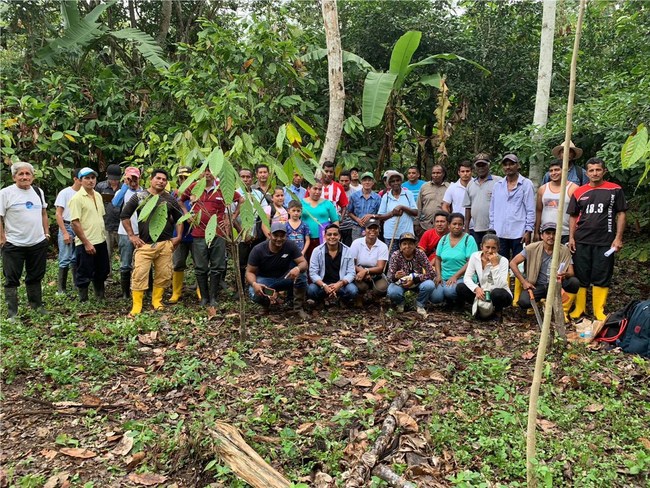Siemens Energy teams up with Duke Energy, Clemson University to study hydrogen use
- Project to help each entity reach bold carbon-reduction goals.
- U.S. Department of Energy to fund year-long study.

NEWS PROVIDED BY Duke Energy
GREENVILLE, S.C., Dec. 10, 2020 /PRNewswire/ -- Siemens Energy, Duke Energy and Clemson University have teamed up to study the use of hydrogen for energy storage and as a low- or no-carbon fuel source to produce energy at Duke Energy's combined heat and power plant at Clemson University in South Carolina.
The U.S. Department of Energy announced today that it awarded Siemens Energy a $200,000 grant for the research initiative.
The pilot project, called H2-Orange – a nod to hydrogen gas and the collaboration with Clemson University – will ramp up in March 2021 and include studies on hydrogen production, storage and co-firing with natural gas.
The studies will evaluate multiple forms of hydrogen production, including green hydrogen, which is created from water and has no byproducts. Hydrogen also has the potential to store larger quantities of energy more efficiently and for longer durations than current lithium-ion battery technology.
"We look forward to developing an advanced hydrogen energy storage system to reduce the carbon footprint on the Clemson University campus, while optimizing the cost of energy for the campus and microgrid," said Richard Voorberg, vice president of global service operations at Siemens Energy. "We want to be a driver of the energy transition, and this is a great step toward building reliable and efficient clean energy infrastructure in the U.S."
This unique arrangement combines the experience, expertise and perspectives of Siemens Energy as the technology developer, Clemson University as the beneficiary and Duke Energy as the owner and operator of the asset.
Siemens Energy will study the use of its Silyzer electrolyzer to produce hydrogen fuel to help power the existing SGT-400 natural gas turbine at the Clemson plant. The Silyzer can use renewables and clean energy sources to create hydrogen without producing emissions. Clemson University will lead the integration of hydrogen into the campus grid and ensure energy needs are met, and Duke Energy will provide operational, engineering and grid modeling expertise. Duke Energy also expects the results of the study to be applicable to its larger combustion turbine fleet.
"Hydrogen integration is a possibility at many of our natural gas stations," said Regis Repko, Duke Energy's senior vice president and chief fossil/hydro officer. "The best way to innovate is through teamwork, and this research could influence the future of energy – reducing reliance on fossil fuels, decreasing energy costs and benefiting the environment and all energy users."
For years, Duke Energy has actively evaluated hydrogen as a low- or no-carbon fuel source to help the company meet its bold net-zero carbon goal by 2050. Siemens Energy and Clemson University also have net-zero carbon goals to reach by 2030.
"This collaboration supports our institutional goal to be carbon neutral while advancing the development of energy technologies that could have far-reaching societal benefit," said Tanju Karanfil, Clemson University vice president for research. "We are proud to collaborate with industry leaders Duke Energy and Siemens Energy and appreciate their interest in this project."
Additional information – www.siemens–energy.com/press
Duke Energy
Duke Energy (NYSE: DUK), a Fortune 150 company headquartered in Charlotte, N.C., is one of the largest energy holding companies in the U.S. It employs 30,000 people and has an electric generating capacity of 51,000 megawatts through its regulated utilities, and 3,000 megawatts through its nonregulated Duke Energy Renewables unit.
Duke Energy is transforming its customers' experience, modernizing the energy grid, generating cleaner energy and expanding natural gas infrastructure to create a smarter energy future for the people and communities it serves. The Electric Utilities and Infrastructure unit's regulated utilities serve approximately 7.7 million retail electric customers in six states – North Carolina, South Carolina, Florida, Indiana, Ohio and Kentucky. The Gas Utilities and Infrastructure unit distributes natural gas to more than 1.6 million customers in five states – North Carolina, South Carolina, Tennessee, Ohio and Kentucky. The Duke Energy Renewables unit operates wind and solar generation facilities across the U.S., as well as energy storage and microgrid projects.
Duke Energy was named to Fortune's 2020 "World's Most Admired Companies" list, and Forbes' 2019 "America's Best Employers" list. More information about the company is available at duke-energy.com. The Duke Energy News Center contains news releases, fact sheets, photos, videos and other materials. Duke Energy's illumination features stories about people, innovations, community topics and environmental issues. Follow Duke Energy on Twitter, LinkedIn, Instagram and Facebook.
Siemens Energy
Siemens Energy is one of the world's leading energy technology companies. The company works with its customers and partners on energy systems for the future, thus supporting the transition to a more sustainable world. With its portfolio of products, solutions and services, Siemens Energy covers almost the entire energy value chain – from power generation and transmission to storage. The portfolio includes conventional and renewable energy technology, such as gas and steam turbines, hybrid power plants operated with hydrogen, and power generators and transformers. More than 50 percent of the portfolio has already been decarbonized. A majority stake in the listed company Siemens Gamesa Renewable Energy (SGRE) makes Siemens Energy a global market leader for renewable energies. An estimated one-sixth of the electricity generated worldwide is based on technologies from Siemens Energy. Siemens Energy employs
more than 90,000 people worldwide in more than 90 countries and generated revenue of around €27.5 billion in fiscal year 2020. www.siemens-energy.com.
Clemson University
One of the most productive public research universities in the nation, Clemson University attracts and powerfully unites students and faculty whose greatest desire is to make a difference in the lives of others. Ranked among the best national public universities by U.S. News & World Report, Clemson is dedicated to teaching, research and service. Our main campus, located in Upstate South Carolina, sits on 1,400 acres in the foothills of the Blue Ridge Mountains, along the shores of Lake Hartwell. We have a presence in every South Carolina county through research facilities, economic development hubs and innovation campuses. Through the research, outreach and entrepreneurial projects led by our faculty and students, Clemson University is driving economic development and improving quality of life in South Carolina and beyond. For more information, go to clemson.edu or visit us on Facebook, Instagram or Twitter.











